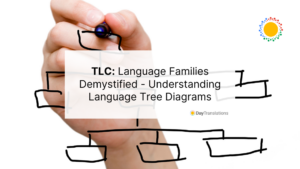Wht if I wrt this sntnc wth mssng lttrs—
Could you still read it?
Chances are, your brain just filled in the gaps like a champion decoder ring on caffeine. But how?
This week, Mystery Mondays takes you inside one of the strangest superpowers your brain has: filling gaps and reading things that aren’t actually there.
Your Brain: The Original AutoCorrect
Reading isn’t just a visual process – it’s a predictive one. Your brain isn’t waiting for every letter like a slow typist. It’s leaping ahead, guessing what comes next based on patterns you’ve seen thousands of times.
So when a letter is missing?
No problem. Your brain just invents it.
Example:
“It dsn’t mtr hw mny lttrs I tak out, y’ll prbbly stll get th mnng.”
Weird, right?
This is known in psycholinguistics as top-down processing – your brain uses context, past knowledge, and expectations to fill in gaps automatically. You’re not reading individual letters… you’re reading expectations.
The Cambridge University “Study” That Fooled the Internet
You may have seen this famous viral paragraph:
“Aoccdrnig to a rscheearch at Cmabrigde Uinervtisy, it deosn’t mttaer in waht oredr the ltteers in a wrod are, the olny iprmoetnt tihng is taht the frist and lsat ltteer be at the rghit pclae…”
No, that wasn’t actually from Cambridge. And no, it wasn’t a real research study.
But the phenomenon is real.
It turns out, as long as:
- The first and last letters of a word are in place, and
- The jumbled letters still resemble the original shape and length of the word,
…your brain can usually decode the sentence with surprising ease.
We’re basically guessing words from shapes, not spelling them out like robots.
So Why Don’t We All Just Drop Letters?
Here’s the catch.
This clever trick only works if your brain already knows:
- The language (e.g., you’re fluent in English)
- The likely context (e.g., familiar sentence structure)
- And you’re not tired or distracted
Otherwise, the illusion breaks down fast. Try reading this:
“Whr bgns t nd th lctn s hdn.”
Tricky, right?
This is also why learning a new language is so hard. When you’re unfamiliar with the vocabulary, your brain can’t predict what’s coming. You need every letter to make sense of it.
What Filling Gaps Means for Everyday Language Use
This illusion has powerful real-world implications:
Texting
We drop letters, abbreviate wildly, and your brain still gets it:
- “u ok?” = You okay?
- “tmrw mtg @ 10” = Tomorrow meeting at 10
Your brain is basically fluent in Textish™.
AutoCorrect
Your predictive abilities mirror how autocorrect and autocomplete work—guessing the most probable word, even when it’s not what you typed.
Sometimes it gets it right.
Other times it turns “I’m on my way” into “I’m an omelet.”
Dyslexia & Reading Aids
Understanding how the brain processes missing or jumbled letters helps us design better tools for readers with dyslexia—where letter placement and word shape recognition play a critical role.
The Brain’s Greatest Magic Trick is Filling Gaps
The coolest part?
You’re not trying to fill in those letters. Your brain just does it.
Reading becomes a kind of magic—you’re pulling meaning out of symbols, gaps, and glitches without even realising it.
It’s also why proofreading your own writing is hard:
You see what you meant to write, not what you actually typed.
Mystery solved.
Bonus Challenge: Decode This!
Can you read this?
“Ths sntnc hs n vwls, bt y cn prbbly stll rd t.”
Or this?
“Cngrts, y hv jst prvd tht lngg dsn’t alwys nd ltrs to wrk.”
If you could, give yourself a gold star. Your brain is basically doing linguistic parkour.
Final Word
Next time someone tells you spelling doesn’t matter, hand them a jumbled mess of letters and watch them flounder.
Spelling does matter, unless your brain is running at 300 guesses a second and filling in the blanks like a psychic.
Language is powerful.
Your brain? Even more so.












Sorry, the comment form is closed at this time.